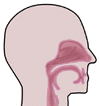  |
||
 |
Glucose metabolism is carefully controlled by several substances in the body. Control of glucose metabolism is the key element that has gone awry in diabetes. In the June 2006 issue of the journal Diabetes Care, it is estimated that more than 73 million Americans — 1/3 of the adult population — now have diabetes or “may be on the way to getting it.” Substances that control body glucose metabolism include insulin, insulin receptors and a group of substances categorized under the headings of insulin-like growth factors (IGF) and insulin-like growth factor binding proteins (IGFBP). The major IGFs are IGF1 and 2; the major binding proteins are IGFBP1-6. IGFs are a family of proteins also known as somatomedins, which are structurally homologous to proinsulin, a precursor of insulin. IGFs are potent mitogenic growth factors that mediate growth-promoting activities of growth hormone. IGFBPs include both high- and low-affinity binding proteins. All are members of a cysteine-rich superfamily of proteins that, as part of their action, act as signal proteins in insulin metabolism in relationship to human sensory function. In order to learn more about these proteins we analyzed blood, urine, saliva and nasal mucus for the presence of IGF1 and IGFBP3 and compared their respective concentrations. We did this in an effort to continue our studies of human insulin and insulin metabolism. We are the first group to find IGF1 and IGFBP3 in human saliva and nasal mucus. Levels of both IGF1 and IGFBP3 are 5-10 times higher in nasal mucus than in saliva. Neither of these substances is found in urine, but levels of both proteins are 30-60 times higher in plasma than in nasal mucus. These results indicate that there is a complex set of homeostatic proteins controlling glucose metabolism present not only in blood but also in saliva and nasal mucus; however, concentrations of these proteins vary widely. The roles of these proteins in controlling glucose metabolism in saliva and nasal mucus are unclear. However, protein levels in nasal mucus are higher than in saliva. Their greater and more specific reactivity in nasal mucus in patients with diabetes and obesity suggests that these proteins in nasal mucus may act as signals in a complex homeostatic feedback mechanism controlling glucose metabolism involving the nasal cavity, the brain and the body as a whole. Since these proteins control energy metabolism in the body, they play a substantive role in sensory function, including taste and smell physiology and pathology. Home
| The Clinic | Diagnosis
| Treatment | FAQ
| Press
|
|